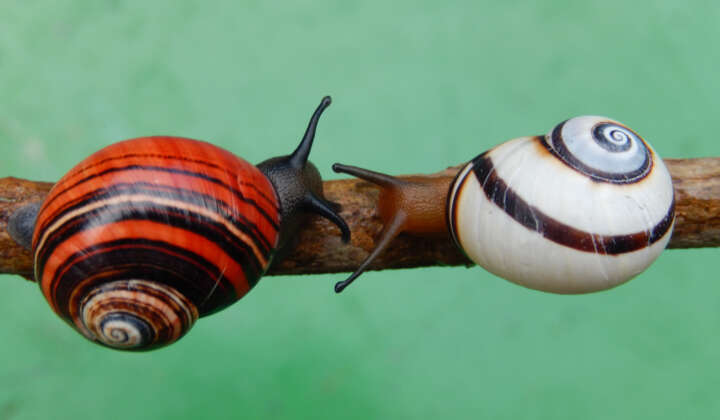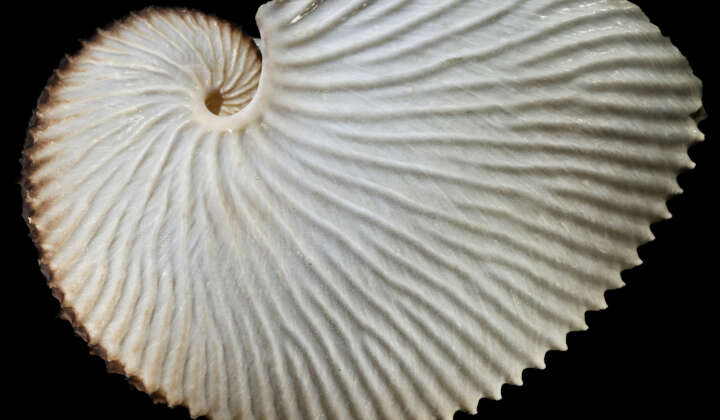Wondrous molluscs
Public voting for "Mollusc of the Year 2022" starts today
In 2021, the Great Paper Boat (Argonauta argo) was the winner – from today, five other mollusc species are competing in a public vote for the title “Mollusc of the Year 2022”. They were selected from around 50 nominations from all over the world, by a jury of scientists from the Senckenberg Natural History Museum Frankfurt, the LOEWE Centre for Translational Biodiversity Genomics (TBG) and the worldwide society for mollusc research (Unitas Malacolgica). For the winning species, the entire genetic information will be decoded.
Hardly any group of living organism is as diverse and species-rich as molluscs, which form the second largest animal phylum after arthropods. But as much as they differ in size, shape, behaviour and preferred habitats: What they have in common is that they have neither bones nor teeth and their bodies consist of a head, a “foot” – a strong muscle for locomotion – and a sac for the intestines. Most species live in the water.
Although molluscs evolved about 500 million years ago, they are still one of the largely unexplored groups of animals, especially from a genomic point of view. Many species are even still waiting to be discovered. There is also a lot of information missing that could help to understand their evolutionary development, relationships, adaptations and behavioural patterns. While the decoding of the genetic material of many other animal tribes is in full swing, there are only a few species among the molluscs whose genome has been completely sequenced.
This is where the international “Mollusc of the Year” competition comes in, which was launched at the end of 2020 by scientists from the Senckenberg Natural History Museum, the LOEWE Centre for Translational Biodiversity Genomics (TBG) and Unitas Malacologica, the worldwide society for mollusc research. “Our goal is to draw more attention to molluscs and make them better known,” explains Dr Carola Greve, laboratory manager at the LOEWE Centre TBG. “Last year we were very surprised and pleased to see how many interesting and rare species were nominated by researchers, but also from the public. Now we are excited about the new competition!”
Dr Julia Sigwart, Section Head of the Department of Malacology at the Senckenberg Natural History Museum Frankfurt, emphasises: “With this project, we want to promote research on different mollusc species. The analysis of the genomes provides important insights into their evolution and adaptation strategies. Therefore, the entire genome of the mollusc that wins the competition will be sequenced via the LOEWE Centre TBG.”
Among the five nominated species are three species of snails, one species of mollusc and one barge-foot, commonly known as elephant’s tusk shell. The snails are represented by the delicate, transparent sea butterfly (Cymbulia peronii), a sediment snail with a conical, evenly structured shell (Telescopium telescopium) and a colourful, air-breathing land snail (Polymita picta). Marine bivalves include shell-less shipworms (Teredo navalis), which digest wood and play a key role in the global carbon cycle by processing plant biomass in the oceans. The barge-foot (Fustiaria rubescens) lives in the seabed and its long shell shape is reminiscent of a small elephant’s tusk.
Voting will take place from 25 February until 15 March 2022 at 23:59 (CET) on the website of the LOEWE Centre TBG under the link https://tbg.senckenberg.de/molluscoftheyear-2022/. Interesting information about the nominated molluscs is also compiled there. The “Mollusc of the Year 2022” will be announced on 18 March 2022.
Information on the previous year’s competition (2021): https://tbg.senckenberg.de/molluscoftheyear-2021/



